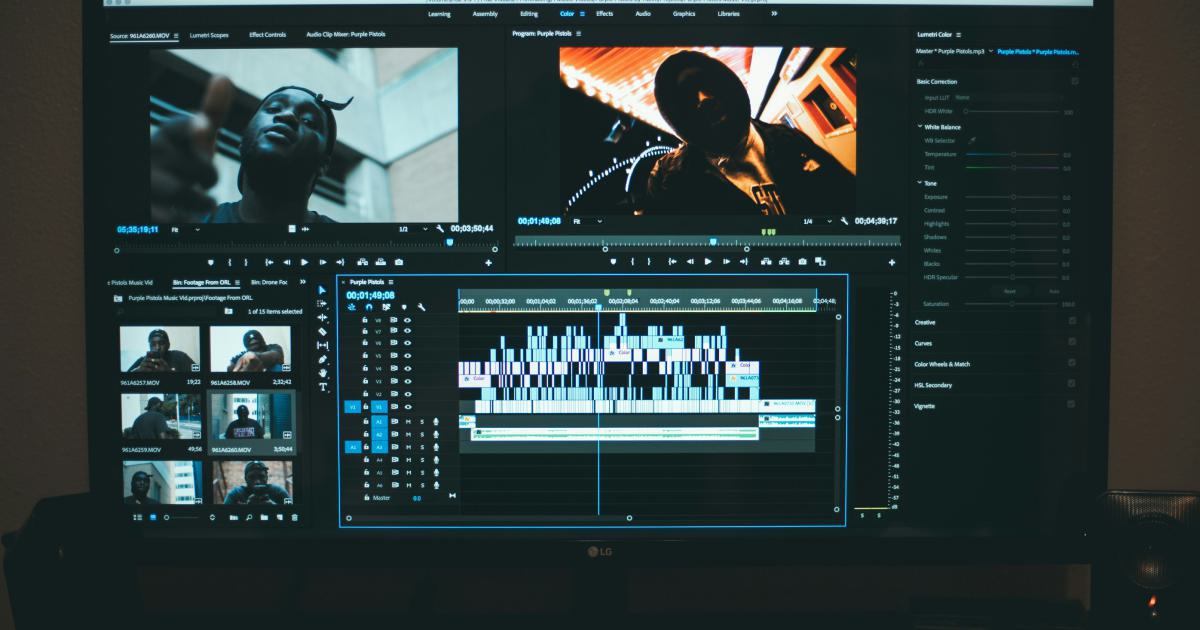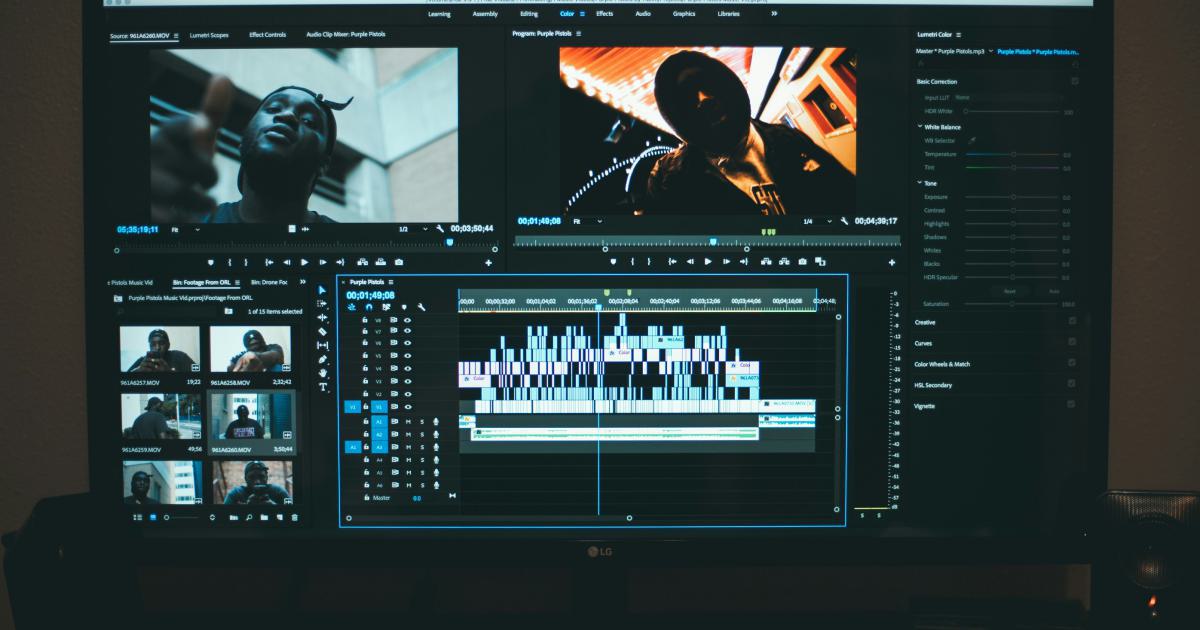12 Game-Changing Tips for Video Analytics Tracking


In the rapidly evolving digital landscape, video analytics tracking has become a crucial tool for businesses and marketers to gain valuable insights into their audience's behavior and preferences. By leveraging the power of data, organizations can make informed decisions, optimize their video content, and drive greater engagement and conversions.
Understanding the Importance of Video Analytics Tracking
In today's world, video content has become an integral part of the digital marketing landscape. From brand awareness campaigns to product demonstrations, videos have the power to captivate audiences and convey messages in a compelling and memorable way. However, the true value of video lies in the data that can be extracted from its performance.
Video analytics tracking provides a wealth of information that can help organizations understand their audience's behavior, identify areas for improvement, and make data-driven decisions. By tracking metrics such as watch time, engagement rates, and drop-off points, businesses can gain a deeper understanding of what resonates with their target audience and adjust their video strategy accordingly.
1. Leverage Comprehensive Video Analytics Platforms
The first step in effective video analytics tracking is to choose a comprehensive platform that can provide a holistic view of your video performance. Popular platforms like YouTube Analytics, Wistia, and Vidyard offer a wide range of metrics and insights to help you make informed decisions.

These platforms typically provide data on:
- Video views and engagement rates
- Audience demographics and behavior
- Traffic sources and referral channels
- Watch time and drop-off points
- Conversion rates and goal tracking
By leveraging a robust video analytics platform, you can gain a deeper understanding of your audience's preferences and identify areas for improvement.
Tip: Integrate Your Video Analytics with Other Marketing Data
To get a complete picture of your video performance, it's essential to integrate your video analytics data with other marketing data sources, such as website analytics, email marketing, and social media metrics. This cross-pollination of data can provide a more comprehensive understanding of how your video content is contributing to the overall marketing objectives.
2. Optimize Video Titles and Descriptions
The title and description of your video can have a significant impact on its discoverability and engagement. Crafting compelling and SEO-optimized titles and descriptions can help your videos rank higher in search results and attract the right audience.

When optimizing your video titles and descriptions, consider the following best practices:
- Use relevant keywords that your target audience is searching for
- Craft a concise and attention-grabbing title that accurately reflects the video's content
- Provide a detailed and informative description that highlights the key benefits and takeaways
- Include relevant tags and hashtags to improve discoverability
- Incorporate a clear call-to-action (CTA) to encourage viewers to take a desired action
Tip: Leverage Video Analytics to Refine Your Titles and Descriptions
Regularly review your video analytics data to identify the titles and descriptions that are performing well. Use this information to refine and optimize your future video content, ensuring that it resonates with your audience and drives the desired outcomes.
3. Analyze Viewer Engagement Metrics
Engagement metrics are crucial for understanding how your audience is interacting with your video content. By analyzing metrics such as watch time, drop-off rates, and viewer interactions, you can gain insights into what's working and what needs improvement.

Some key engagement metrics to focus on include:
- Average watch time: This metric indicates how long viewers are watching your videos, which can help you identify areas where your content is captivating or losing viewer interest.
- Drop-off rate: Analyzing where viewers are dropping off can help you identify points in your video that may need adjustment or additional engagement strategies.
- Viewer interactions: Tracking metrics like likes, shares, and comments can provide valuable insights into how your audience is responding to your content and help you identify your most engaging videos.
Tip: Use Engagement Metrics to Optimize Video Content
Leverage your video engagement metrics to refine and optimize your content. For example, if you notice a high drop-off rate at a specific point in your video, you can analyze the content and make adjustments to keep viewers engaged throughout the entire video.
4. Understand Your Audience Demographics
Knowing your audience demographics is crucial for creating content that resonates with your target market. Video analytics platforms can provide valuable insights into the age, gender, location, and interests of your viewers, allowing you to tailor your video content accordingly.

By understanding your audience's demographics, you can:
- Develop personas and buyer profiles to guide your video content creation
- Identify the most effective platforms and channels to reach your target audience
- Personalize your video messaging and visuals to appeal to your specific audience
- Optimize your video distribution and promotion strategies based on where your audience is most active
Tip: Leverage Audience Insights to Inform Your Video Strategy
Regularly review your audience demographics and use this information to guide your video content planning, production, and distribution. Continuously refine your approach based on the insights gained from your video analytics data.
5. Track Conversion and Goal Completion Rates
One of the ultimate goals of video analytics tracking is to understand how your video content is contributing to your business objectives, such as lead generation, sales, or brand awareness. By tracking conversion and goal completion rates, you can measure the effectiveness of your video marketing efforts and optimize your strategy accordingly.
Some key conversion and goal tracking metrics to monitor include:
- Call-to-action (CTA) click-through rates
- Lead generation form submissions
- Product or service inquiries
- E-commerce sales
- Website traffic and engagement
Tip: Integrate Video Analytics with Your CRM and Marketing Automation Tools
To get a comprehensive view of your video's impact on conversions and goal completions, integrate your video analytics data with your customer relationship management (CRM) and marketing automation tools. This will allow you to track the full customer journey and understand how your video content is contributing to your overall marketing and sales objectives.
6. Analyze Traffic Sources and Referral Channels
Understanding where your video viewers are coming from is crucial for optimizing your video distribution and promotion strategies. Video analytics platforms can provide insights into the various traffic sources and referral channels that are driving viewers to your videos.

Some key traffic and referral metrics to focus on include:
- Direct traffic: Viewers who navigate directly to your video
- Organic search: Viewers who find your video through search engine results
- Referral traffic: Viewers who click on your video from another website or platform
- Social media: Viewers who discover your video through social media channels
- Paid advertising: Viewers who find your video through paid advertising campaigns
Tip: Leverage Referral Insights to Expand Your Video Distribution
Analyze your top-performing referral channels and use this information to expand your video distribution strategy. For example, if you find that your videos are performing well on a particular social media platform, consider increasing your presence and engagement on that platform to reach a wider audience.
7. Optimize for Mobile Viewing
In today's mobile-first world, it's crucial to ensure that your video content is optimized for seamless viewing on various devices, especially smartphones and tablets. Video analytics can provide insights into the devices and screen sizes your viewers are using to access your videos, allowing you to make informed decisions about your video production and distribution.

When optimizing your videos for mobile viewing, consider the following best practices:
- Ensure your videos are responsive and adapt to different screen sizes
- Use vertical or square aspect ratios for better visibility on mobile devices
- Optimize your video file sizes and codecs for faster loading times
- Incorporate mobile-friendly features like captions and subtitles
- Optimize your video titles, descriptions, and CTAs for mobile readability
Tip: Leverage Mobile Viewing Data to Enhance the User Experience
Regularly review your video analytics data to understand the device usage and screen size preferences of your audience. Use this information to make targeted improvements to your video content and delivery, ensuring a consistently positive viewing experience across all devices.
8. Identify Top-Performing Videos
Analyzing your video analytics data can help you identify your top-performing videos, which can provide valuable insights into the types of content that resonate most with your audience. By understanding which videos are driving the highest engagement, conversions, and goal completions, you can replicate the successful elements and optimize your future video content accordingly.

When identifying your top-performing videos, consider the following metrics:
- Views and engagement rates
- Watch time and retention
- Conversion and goal completion rates
- Social shares and comments
Tip: Repurpose and Promote Your Top-Performing Videos
Once you've identified your top-performing videos, consider repurposing and promoting them to maximize their impact. This could include creating shorter clips or snippets for social media, embedding them in relevant blog posts, or using them in email marketing campaigns.
9. Monitor Video Performance Over Time
Video analytics tracking is not a one-time exercise; it's an ongoing process that requires continuous monitoring and analysis. By tracking your video performance over time, you can identify trends, detect changes in audience behavior, and make data-driven adjustments to your video strategy.

Some key things to monitor over time include:
- Changes in view counts, engagement rates, and conversion metrics
- Shifts in audience demographics and device usage
- The impact of content updates, distribution changes, or marketing campaigns
- Seasonal or cyclical variations in video performance
Tip: Set Up Regular Video Analytics Reporting
Establish a routine for reviewing your video analytics data, such as weekly or monthly reports. This will help you stay on top of your video performance and make timely adjustments to your strategy.
10. Leverage Audience Segmentation
Video analytics platforms often provide the ability to segment your audience based on various criteria, such as demographics, behavior, or interests. By leveraging audience segmentation, you can gain a deeper understanding of your viewers and create more personalized and targeted video content.

Some ways to leverage audience segmentation include:
- Identifying your most engaged and valuable viewers
- Tailoring your video messaging and CTAs to specific audience segments
- Optimizing your video distribution and promotion strategies for different segments
- Experimenting with personalized video content for targeted groups
Tip: Use Audience Segmentation to Inform Your Video Content Strategy
Regularly review your audience segmentation data and use the insights to guide your video content planning and production. This will help you create more relevant and impactful videos that resonate with your target audience.
11. Experiment with Video Testing and Optimization
Continuous testing and optimization is key to improving the performance of your video content. Video analytics platforms often provide tools and features that allow you to experiment with different elements of your videos, such as thumbnails, CTAs, or messaging, and measure the impact on viewer engagement and conversions.

Some areas to focus on for video testing and optimization include:
- Thumbnail images and video titles
- Call-to-action placement and wording
- Video length and content structure
- Messaging and storytelling approach
- Video production elements (e.g., lighting, music, graphics)
Tip: Leverage A/B Testing to Identify Winning Strategies
Implement A/B testing to compare the performance of different video variations and identify the most effective strategies. Use the insights gained from these tests to continuously refine and optimize your video content.
12. Integrate Video Analytics with Other Marketing Data
To truly unlock the power of video analytics, it's essential to integrate your video data with other marketing and business intelligence sources. By cross-referencing your video analytics with data from your website, social media, CRM, and other relevant platforms, you can gain a comprehensive understanding of how your video content is contributing to your overall marketing and business objectives.

Some benefits of integrating video analytics with other data sources include:
- Identifying the impact of video content on lead generation, sales, and customer retention
- Understanding the relationship between video engagement and other marketing touchpoints
- Optimizing your video content and distribution strategies based on a holistic view of your audience
- Aligning your video marketing efforts with your broader business goals and KPIs
Tip: Leverage a Data Visualization Tool to Gain Actionable Insights
Consider using a data visualization tool, such as Tableau or Power BI, to create custom dashboards and reports that integrate your video analytics with other marketing data. This will help you uncover valuable insights and make more informed, data-driven decisions about your video strategy.